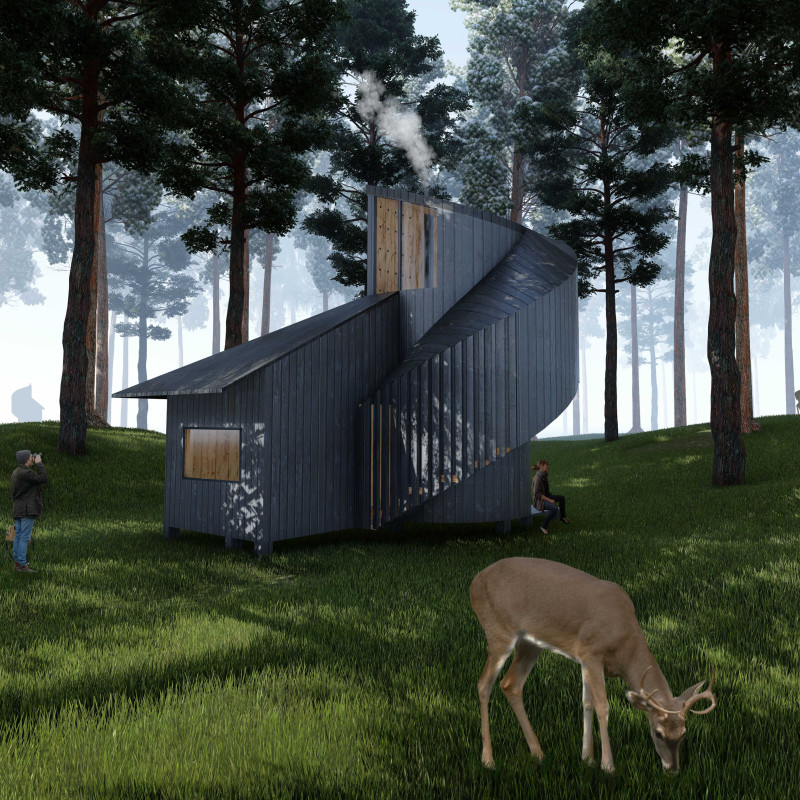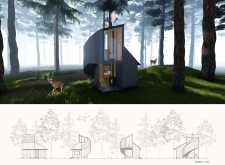5 key facts about this project
The Passage Cabins project is located in Ozolini, Latvia, where it meets the growing desire for spaces that support mindfulness and a connection to nature. The design focuses on creating a retreat that allows individuals to step away from the pressures of urban life and find moments of personal reflection. With clear separation between areas for meditation and living, the project encourages a deeper relationship with the natural surroundings.
Design Concept
The approach to design features distinct spaces that cater to meditation and daily activities, enhancing usability without losing the calm atmosphere. The layout is organized into various sections, including a Living Section and a Meditation Section, in addition to layers called the Ground Layer, Forest Layer, Passage Section, and Understory Layer. This clear division allows users to engage with nature from different perspectives.
Meditative Spaces
The Meditation Section is carefully crafted to support quiet practices. Movable walls within this area allow flexibility, giving users control over their experience. Passageways are also designed to enhance visual and auditory connections with the outdoors. This integration invites visitors to enjoy the sounds of the forest, which deepens their meditative experience.
Materiality
Norway Spruce is chosen for the construction, serving as both the outer and inner surfaces of the cabins. This choice reflects a commitment to sustainability, using local materials that align with the region's ecology. The warmth of the timber adds to the welcoming feel of the space, reinforcing the aim of creating a restful environment that connects individuals to nature.
Sensory Integration
The design includes elements that manage light and sound effectively. Skylights in the Meditation Section allow natural light to enter, enhancing the spiritual quality of the interior. Additionally, the sound wall concept facilitates natural acoustics, letting the sounds from outside become part of the users' experience.
The careful arrangement of walls and openings creates a flow of light and shadow. This interaction invites visitors to engage with their surroundings while moving through the Passage Cabins, further immersing them in a sense of peace and reflection.






















































